Adjusting the Regular Network of Squares Resolution to the Digital Terrain Model Surface Shape
Abstract
:1. Introduction
2. Materials and Methods
2.1. Development of a Test Model
2.2. Determination of the Morphological Index
3. Results
The Application of a Morphological Index for the Determination of Density of Regular Network of Squares in Zones of a Different Surface Morphology
- Analysis of the measurements sets in terms of the surface morphology.
- Determination of the initial homogeneous network for the entire area.
- Calculation of the morphological index values in individual nodes.
- Division into morphological diversity zones.
- Determination of the zone with the desired model accuracy.
- Subsequent iterations changing the network density in individual zones.
- Determination and verification of the morphological index in individual zones.
- Offsetting the morphological index values over the entire area.
- Determination of the final network density in individual zones.
- Generation of a non-homogeneous network, different in individual zones.
- Final inspection of the interpolation model in terms of quality and accuracy.
4. Discussion
4.1. The Application of the Morphological Index in the Theoretical Model
4.2. The Application of the Morphological Index in the Digital Terrain Model
5. Conclusions
Author Contributions
Funding
Conflicts of Interest
References
- Goodchild, M.F. Geographic information systems and science: Today and tomorrow. Ann. GIS 2009, 15, 3–9. [Google Scholar] [CrossRef] [Green Version]
- Longley, P.A.; Goodchild, M.F.; Maguire, D.J.; Rhind, D.W. Geographical Information Systems and Science, 3rd ed.; Wiley: Hoboken, NJ, USA, 2011. [Google Scholar]
- Yue, T.X.; Du, Z.P.; Song, D.J. A new method of surface modelling and its application to DEM construction. Geomorphology 2007, 91, 161–172. [Google Scholar] [CrossRef]
- Choi, J.; Usery, E. System integration of GIS and a rule-based expert system for urban mapping. Photogramm. Eng. Remote Sens. 2004, 70, 2017–2024. [Google Scholar] [CrossRef]
- Zhou, Q.; Chen, Y. Generalization of DEM for terrain analysis using a compound method. ISPRS J. Photogramm. Remote Sens. 2011, 66, 38–45. [Google Scholar] [CrossRef]
- Kraus, K.; Briese, C.; Attwenger, M.; Pfeifer, N. Quality measures for digital terrain models. Int. Arch. Photogramm. Remote Sens. and Spat. Inf. Sci. 2004, 35, 1682–1750. [Google Scholar]
- Shan, J.; Sampath, A. Urban DEM generation from raw LiDAR data: A labeling algorithm and its performance. Photogramm. Eng. Remote Sens. 2005, 71, 217–222. [Google Scholar] [CrossRef] [Green Version]
- Lee, H.S.; Younan, N. DTM extraction of LiDAR returns via adaptive processing. IEEE Trans. Geosci. Remote Sens. 2003, 41, 2063–2069. [Google Scholar] [CrossRef]
- Isenburg, M.; Liu, Y.; Shewchuk, J.; Snoeyink, J.; Thirion, T. Generating raster DEM from mass points via TIN streaming. Geogr. Inf. Sci. Lect. Notes Comput. Sci. 2006, 4197, 186–198. [Google Scholar]
- Brovelli, M.A.; Cannata, M.; Longoni, U.M. LiDAR data filtering and DTM interpolation within GRASS. Trans. GIS 2004, 8, 155–174. [Google Scholar] [CrossRef]
- Aruga, K.; Sessions, J.; Akay, A.E. Application of an airborne laser scanner to forest road design with accurate earthwork volumes. J. For. Res. 2005, 10, 113–123. [Google Scholar] [CrossRef]
- Tovari, D.; Vogtle, T. Classification methods for 3D objects in laser scanning data. Int. Arch. Photogramm. Remote Sens. Spat. Inf. Sci. 2004, 35, 408–413. [Google Scholar]
- Zandbergen, P.A. Accuracy Considerations in the Analysis of Depressions in Medium Resolution LiDAR DEMs. Giscience Remote Sens. 2010, 47, 187–207. [Google Scholar] [CrossRef]
- Lihong, W.; Wenhai, X.; Wenbo, W. Survey of Seafloor Targets with Varied Sizes by Multi Beam Sonar in Different Depth Water. Trans. Tech. Publ. Appl. Mech. Mater. 2013, 263–266, 909–914. [Google Scholar]
- Wang, C.; Tseng, Y. DEM generation from airborne LiDAR data by an adaptive dualdirectional slope filter. Int. Arch. Photogramm. Remote Sens. Spat. Inf. Sci. 2010, 38, 628–632. [Google Scholar]
- Calder, B.; Mayer, L. Automatic processing of high-rate, highdensity multibeam echosounder data. Geochem. Geophys. Geosyst. 2003, 4, 1048–1069. [Google Scholar] [CrossRef]
- Rivas, M.; Maslanik, J.; Sonntag, J.; Axelrad, P. Sea ice roughness from airborne LiDAR profiles. IEEE Trans. Geosci. Remote Sens. 2006, 44, 3032–3037. [Google Scholar] [CrossRef]
- Shi, W.; Fisher, P.F.; Goodchild, M.F. Recent developments in modeling uncertainties in geo-spatial data and analysis. Photogramm. Eng. Remote Sens. 2004, 70, 919–930. [Google Scholar]
- Harmon, J.E.; Anderson, S.J. The Design and Implementation of Geographic Information Systems, 1st ed.; Wiley: Hoboken, NJ, USA, 2003. [Google Scholar]
- Pigozzi, B.W. A hierarchy of spatial marginality through spatial filtering. Prof. Geogr. 2004, 56, 460–470. [Google Scholar]
- Gościewski, D. Reduction of deformations of the digital terrain model by merging interpolation algorithms. Comput. Geosci. 2014, 64, 61–71. [Google Scholar] [CrossRef]
- Szczepańska, A.; Gościewski, D.; Gerus-Gościewska, M. A GRID-Based Spatial Interpolation Method as a Tool Supporting Real Estate Market Analyses. ISPRS Int. J. Geo. Inf. 2020, 9, 39. [Google Scholar] [CrossRef] [Green Version]
- Mongus, D.; Zalik, B. Parameter-free ground filtering of LiDAR data for automatic DTM generation. ISPRS J. Photogramm. Remote Sens. 2012, 66, 1–12. [Google Scholar] [CrossRef]
- Sithole, G.; Vosselman, G. Experimental comparison of filter algorithms for bare earth extraction from airborne laser scanning point clouds. ISPRS J. Photogramm. Remote Sens. 2004, 59, 85–101. [Google Scholar] [CrossRef]
- Gaboardi, C.; Mitishita, E.; Firkowski, H. Digital terrain modeling generalization with base in Wavelet Transform. Boletim de Ciências Geodésicasl. 2011, 17, 115–129. [Google Scholar] [CrossRef] [Green Version]
- Vosselman, G. Slope based filtering of laser altimetry data. Int. Arch. Photogramm. Remote Sens. 2000, 33, 935–942. [Google Scholar]
- Sithole, G. Filtering of laser altimetry data using a slope adaptive filter. Int. Arch. Photogramm. Remote Sens. 2001, 34, 203–210. [Google Scholar]
- Chen, Q.; Gong, P.; Baldocchi, D.; Xie, G. Filtering airborne laser scanning data with morphological methods. Photogramm. Eng. Remote Sens. 2007, 73, 175–185. [Google Scholar] [CrossRef] [Green Version]
- Arctur, D.; Zeiler, M. Designing Geodatabases: Case Studies in GIS Data Modeling; ESRI Press: Redlands, CA, USA, 2004. [Google Scholar]
- Gerus-Gościewska, M.; Gościewski, D.; Szczepańska, A. The Use of a Grid Structure for Reconstructing and Forecasting the Value of Real Estate in Selected Measurement Epochs. Geosciences 2019, 9, 485. [Google Scholar] [CrossRef] [Green Version]
- Meng, X.; Currit, N.; Zhao, K. Ground filtering algorithms for airborne LiDAR data: A review of critical issues. Remote Sens. 2010, 2, 833–860. [Google Scholar] [CrossRef] [Green Version]
- Zhang, K.Q.; Chen, S.; Whitman, D.; Shyu, M.; Yan, J.; Zhang, C. A progressive morphological filter for removing nonground measurements from airborne LiDAR data. IEEE Trans. Geosci. Remote Sens. 2003, 41, 872–882. [Google Scholar] [CrossRef] [Green Version]
- Finley, A.; Sang, H.; Banerjee, S.; Gelfand, A. Improving the performance of predictive process modeling for large datasets. Comput. Stat. Data Anal. 2009, 53, 2873–2884. [Google Scholar] [CrossRef] [Green Version]
- Furrer, R.; Genton, M.; Nychka, D. Covariance tapering for interpolation of large spatial datasets. J. Comput. Graph. Stat. 2006, 15, 502–523. [Google Scholar] [CrossRef] [Green Version]
- Raaflaub, L.D.; Collins, M.J. The effect of error in gridded digital elevation models on the estimation of topographic parameters. Environ. Model. Softw. 2006, 21, 710–732. [Google Scholar] [CrossRef]
- Chen, C.F.; Li, Y.Y.; Dai, H.L. An application of Coons patch to generate grid- based digital elevation models. Int. J. Appl. Earth Obs. Geoinf. 2011, 13, 830–837. [Google Scholar] [CrossRef]
- Gao, J. Resolution and accuracy of terrain representation by grid DEMs at a micro-scale. Int. J. Geogr. Inf. Sci. 2001, 11, 199–212. [Google Scholar] [CrossRef]
- Wu, J.; Amaratunga, K. Wavelet triangulated irregular networks. Int. J. Geogr. Inf. Sci. 2003, 17, 273–289. [Google Scholar] [CrossRef]
- Yanalak, M. Effect of gridding method on digital terrain model profile data based on scattered data. J. Comput. Civ. Eng. 2003, 17, 58–67. [Google Scholar] [CrossRef]
- Zhang, X.; Drake, N.A.; Wainwright, J.; Mulligan, M. Comparison of slope estimates from low resolution DEMs: Scaling issues and a fractal method for their solution. Earth Surf. Process. Landf. 1999, 24, 763–779. [Google Scholar] [CrossRef]
- Deng, Y. New trends in digital terrain analysis: Landform definition, representation, and classification. Prog. Phys. Geogr. 2007, 31, 405–419. [Google Scholar] [CrossRef]
- Hjort, J.; Luoto, M. Modelling patterned ground distribution in Finnish Lapland: An integration of topographical, ground and remote sensing information. Phys. Geogr. 2006, 88, 19–29. [Google Scholar] [CrossRef]
- Pitas, I. Digital Image Processing Algorithms and Applications; John Wiley and Sons: New York, NY, USA, 2000. [Google Scholar]
- Haugerud, R.A.; Harding, D.J. Some algorithms for virtual deforestation (VDF) of LiDAR topographic survey data. Int. Arch. Photogramm. Remote Sens. 2001, 34, 211–217. [Google Scholar]
- Chaplot, V.; Darboux, F.; Bourennane, H.; Leguédois, S.; Silvera, N.; Phachomphon, K. Accuracy of interpolation techniques for the derivation of digital elevation models in relation to landform types and data density. Geomorphology 2006, 77, 126–141. [Google Scholar] [CrossRef]
- Arefi, H.; Hahn, M. A morphological reconstruction algorithm for separating off-terrain points from terrain points in laser scanning data. Int. Arch. Photogramm. Remote Sens. Spat. Inf. Sci. 2005, 36, 120–125. [Google Scholar]
- Zhang, K.; Whitman, D. Comparison of three algorithms for filtering airborne LiDAR data. Photogramm. Eng. Remote Sens. 2005, 71, 313–324. [Google Scholar] [CrossRef] [Green Version]
- Cressie, N.; Pavlicová, M. Calibrated spatial moving average simulations. Stat. Model. Int. J. 2002, 4, 267–279. [Google Scholar] [CrossRef]
- Sirmacek, B.; Taubenbock, H.; Reinartz, P.; Ehlers, M. Performance evaluation for 3-D city model generation of six different DSMs from air- and spaceborne sensors. IEEE J. Sel. Top. Appl. Earth Obs. Remote Sens. 2012, 5, 59–70. [Google Scholar] [CrossRef]
- Bickel, P.; Doksum, K. Mathematical Statistics: Basic Ideas and Selected Topics; Holden-Day: San Francisco, CA, USA, 1977. [Google Scholar]
- Najman, L.; Talbot, H. (Eds.) Mathematical Morphology: From Theory to Applications; Wiley-ISTE: London, UK, 2010. [Google Scholar]
- Harper, H.L. The method of least squares and some alternatives. Part I, II, II, IV, V, VI. Int. Satistical Rev. 1974, 42, 147–174. [Google Scholar]
- Deakin, R.E. A review of Least Squares theory applied to traverse adjustment. Aust. Surv. 1991, 36, 245–253. [Google Scholar] [CrossRef]
- Abdi, H. The Method of Least Squares; Encyclopedia of Measurement and Statistics: Thousand Oaks, CA, USA, 2007. [Google Scholar]
- Menke, W. Review of the generalized least squares method. Surv. Geophys. 2015, 36, 1–25. [Google Scholar] [CrossRef]
- Larson, R.; Farber, E. Elementary Statistics: Picturing the World; Prentice-Hall: Englewood Cliffs, NJ, USA, 2003. [Google Scholar]
- Chen, T.; Ohlsson, H.; Ljung, L. On the estimation of transfer functions, regularizations and Gaussian processes revisited. Automatica 2012, 48, 1525–1535. [Google Scholar] [CrossRef] [Green Version]
- Pasławski, J. Jak Opracować Kartogram; Wydawnictwa Uniwersytetu Warszawskiego: Warszawa, Poland, 2003. [Google Scholar]
- Robinson, A.; Sale, R.; Morrison, J. Elements of Cartography. Podstawy Kartografii; PWN: Warszawa, Poland, 1998. [Google Scholar]
- Van Overschee, P.; de Moor, B. Subspace Identification for Linear Systems: Theory, Implementation, Applications; Kluwer Academic Publishers: Boston, MA, USA, 1996. [Google Scholar]
- Casella, G.; Berger, R. Statistical Inference, 2nd ed.; Duxbury Advanced Series: Pacific Grove, CA, USA, 2002. [Google Scholar]
- Moore, D.; McCabe, G. Introduction to the Practice of Statistics; W.H. Freeman and Co.: London, UK, 2003. [Google Scholar]
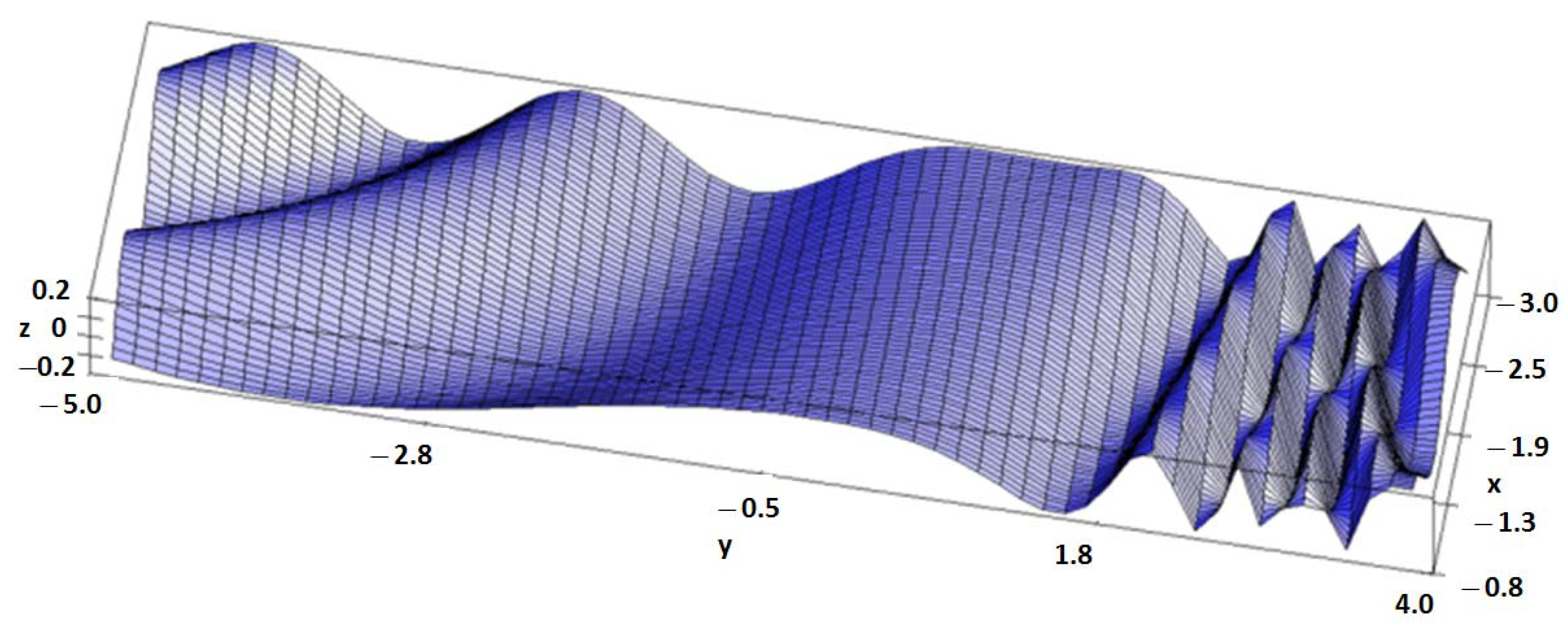

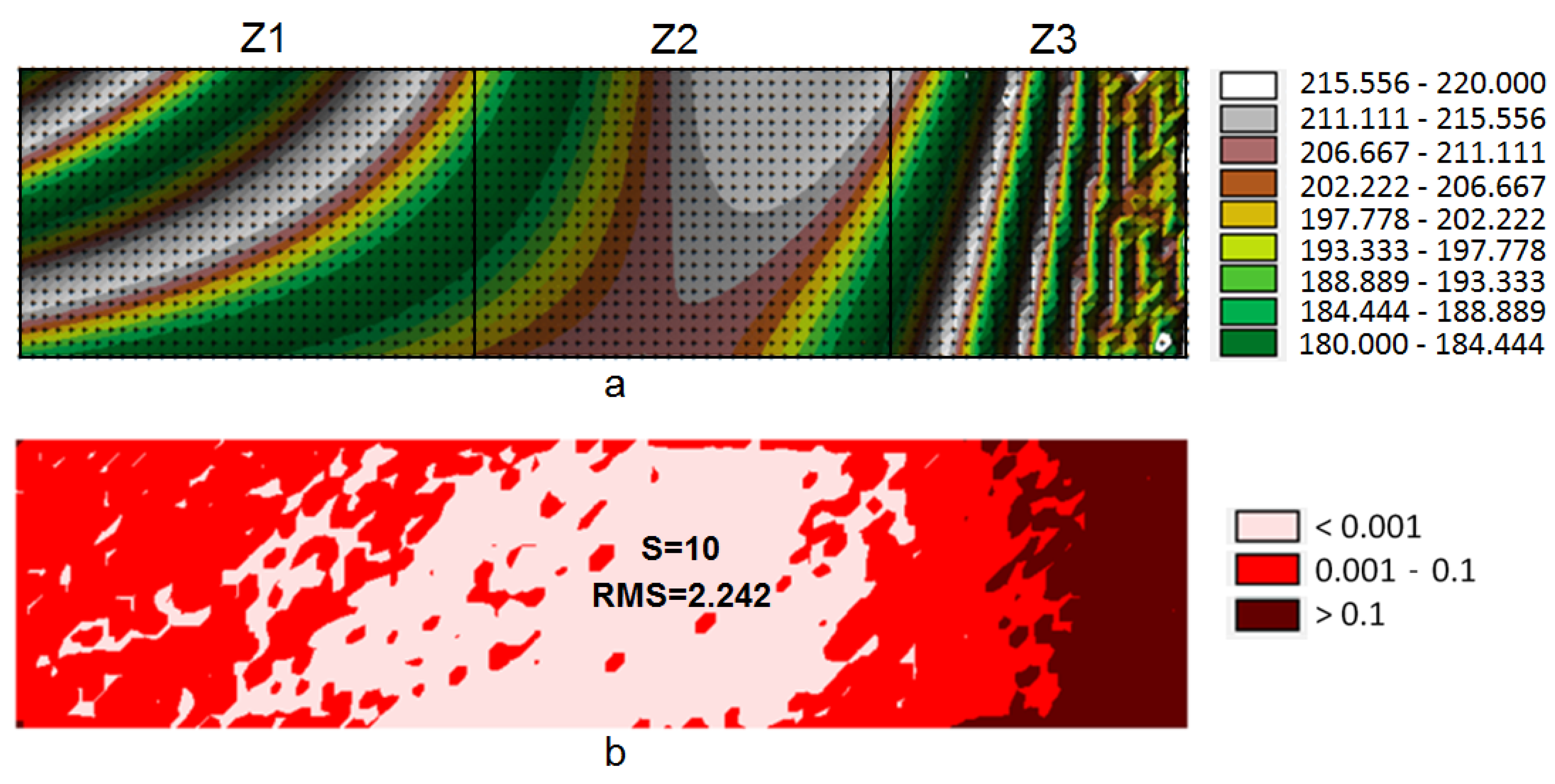
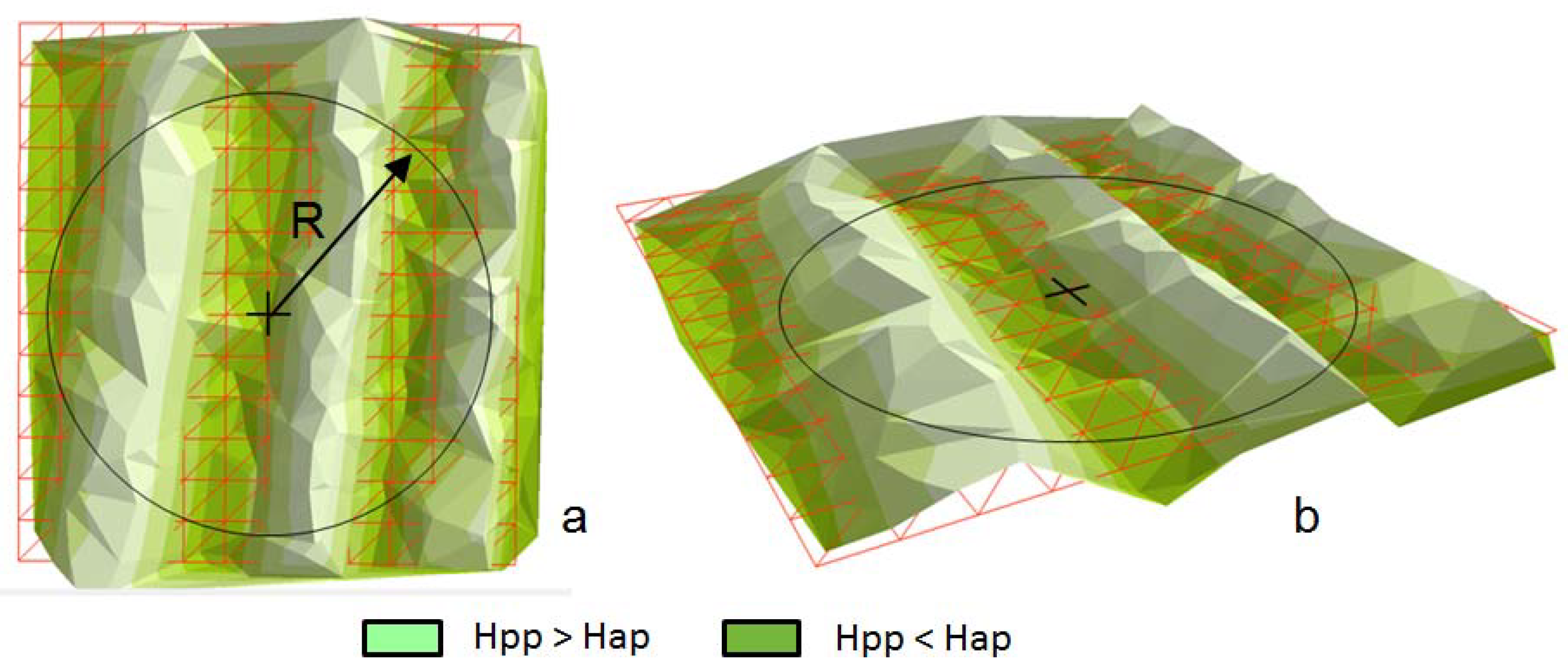

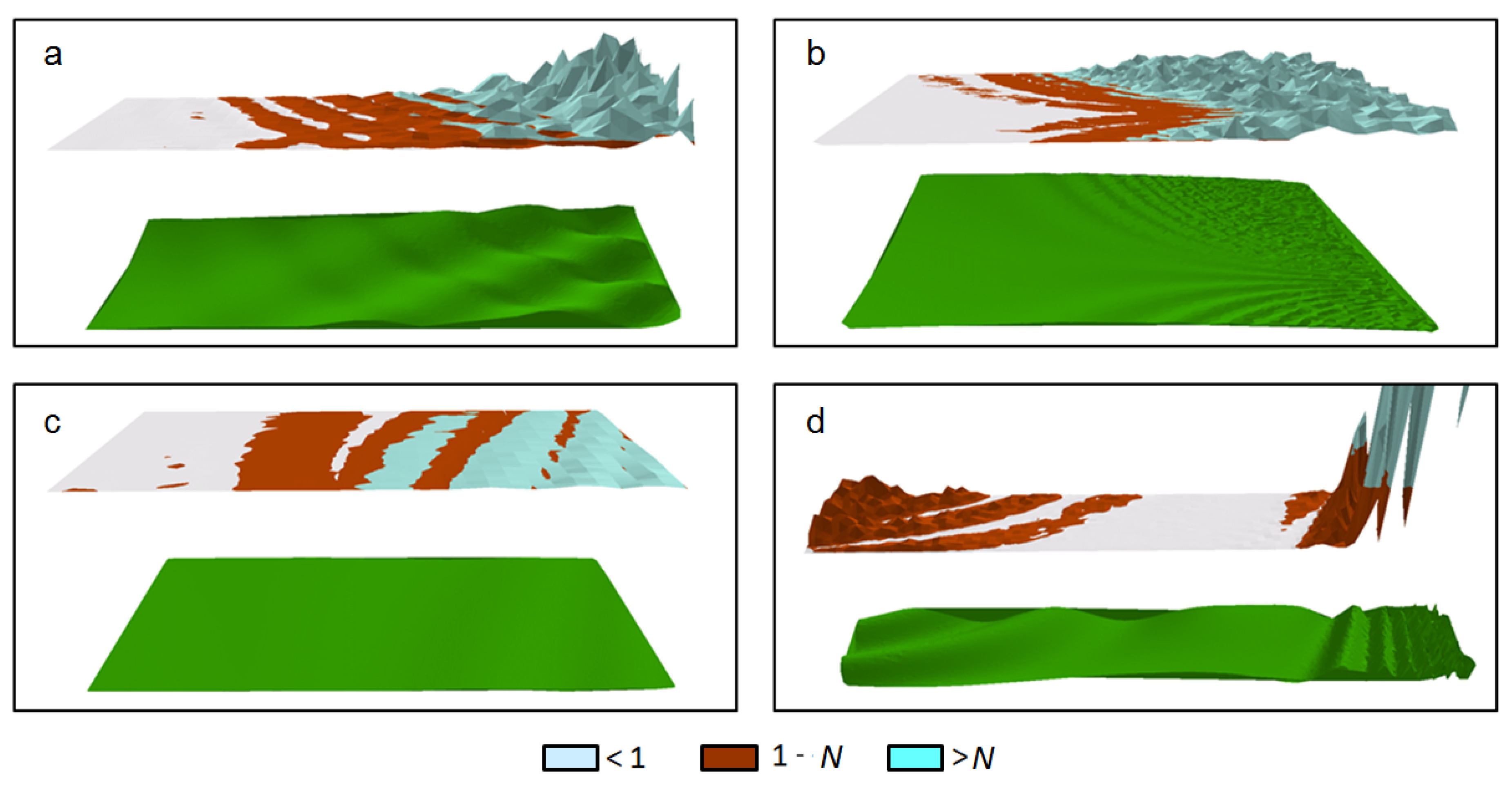

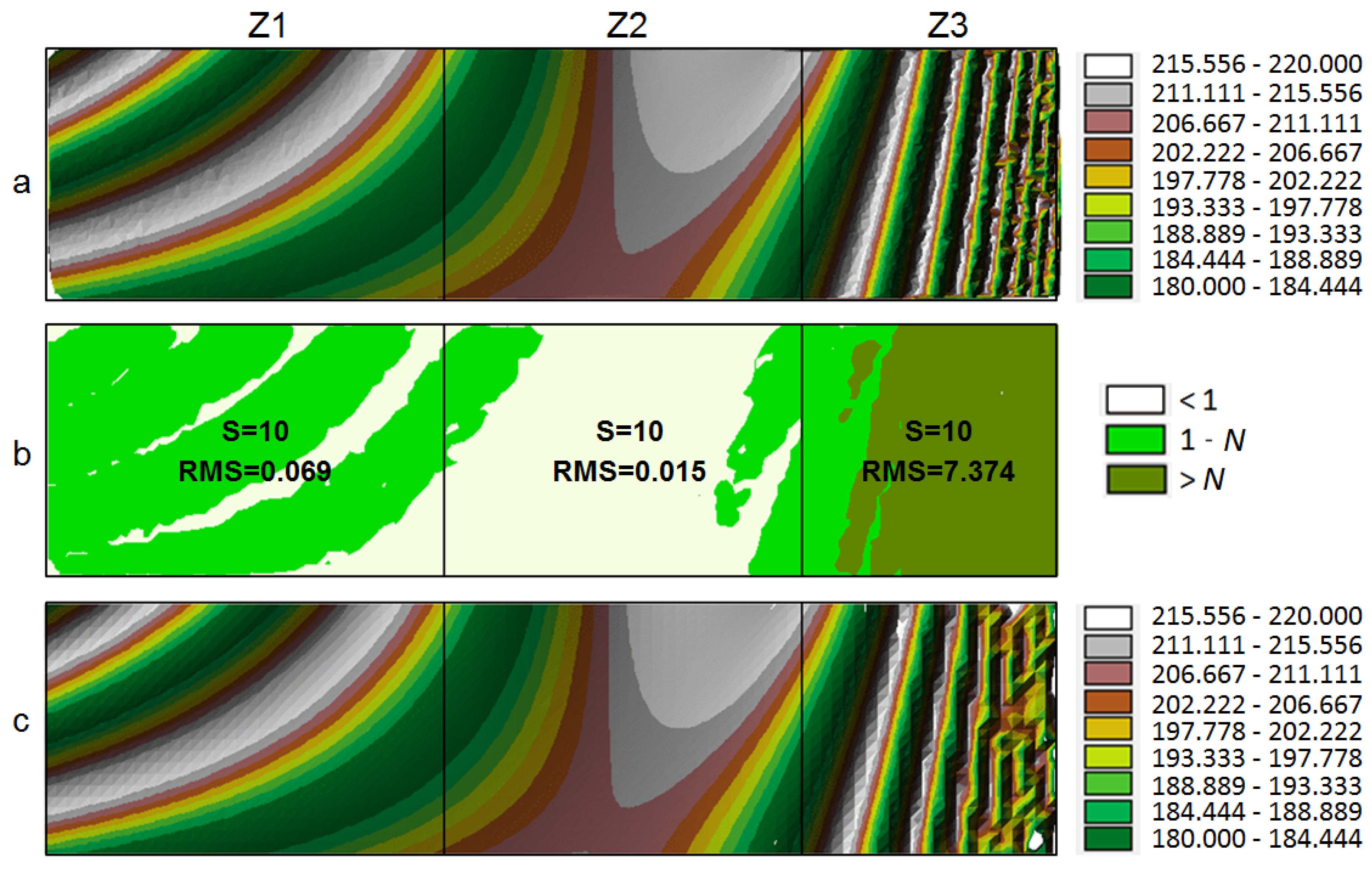


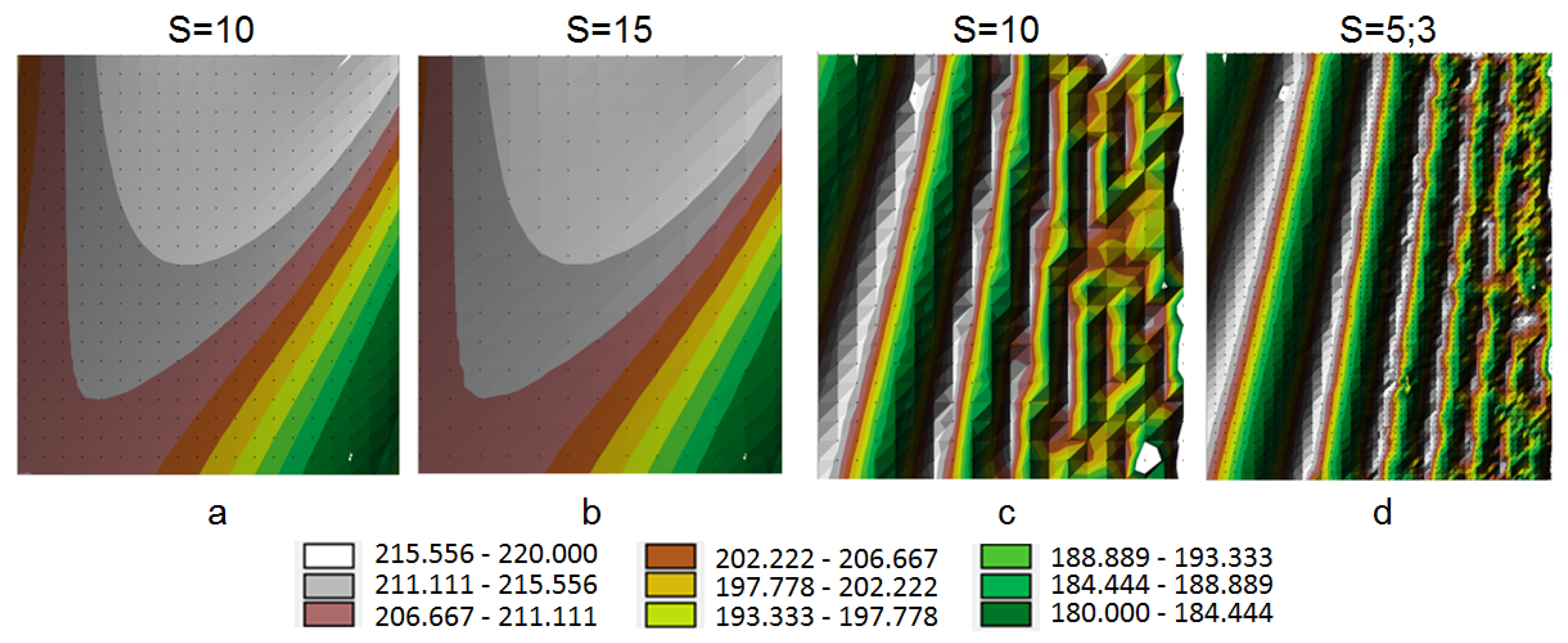
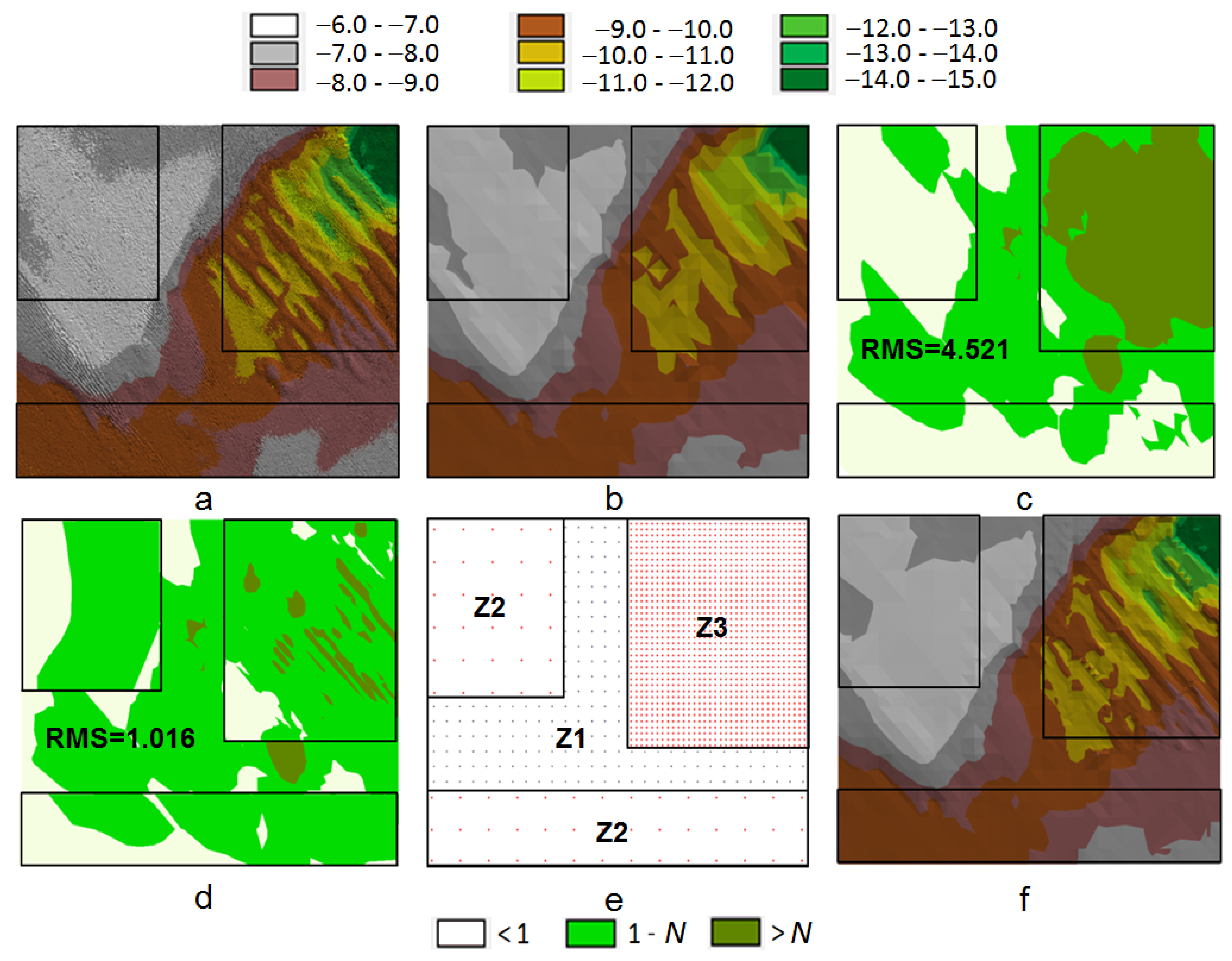
Publisher’s Note: MDPI stays neutral with regard to jurisdictional claims in published maps and institutional affiliations. |
© 2020 by the authors. Licensee MDPI, Basel, Switzerland. This article is an open access article distributed under the terms and conditions of the Creative Commons Attribution (CC BY) license (http://creativecommons.org/licenses/by/4.0/).
Share and Cite
Gościewski, D.; Gerus-Gościewska, M. Adjusting the Regular Network of Squares Resolution to the Digital Terrain Model Surface Shape. ISPRS Int. J. Geo-Inf. 2020, 9, 761. https://0-doi-org.brum.beds.ac.uk/10.3390/ijgi9120761
Gościewski D, Gerus-Gościewska M. Adjusting the Regular Network of Squares Resolution to the Digital Terrain Model Surface Shape. ISPRS International Journal of Geo-Information. 2020; 9(12):761. https://0-doi-org.brum.beds.ac.uk/10.3390/ijgi9120761
Chicago/Turabian StyleGościewski, Dariusz, and Małgorzata Gerus-Gościewska. 2020. "Adjusting the Regular Network of Squares Resolution to the Digital Terrain Model Surface Shape" ISPRS International Journal of Geo-Information 9, no. 12: 761. https://0-doi-org.brum.beds.ac.uk/10.3390/ijgi9120761





